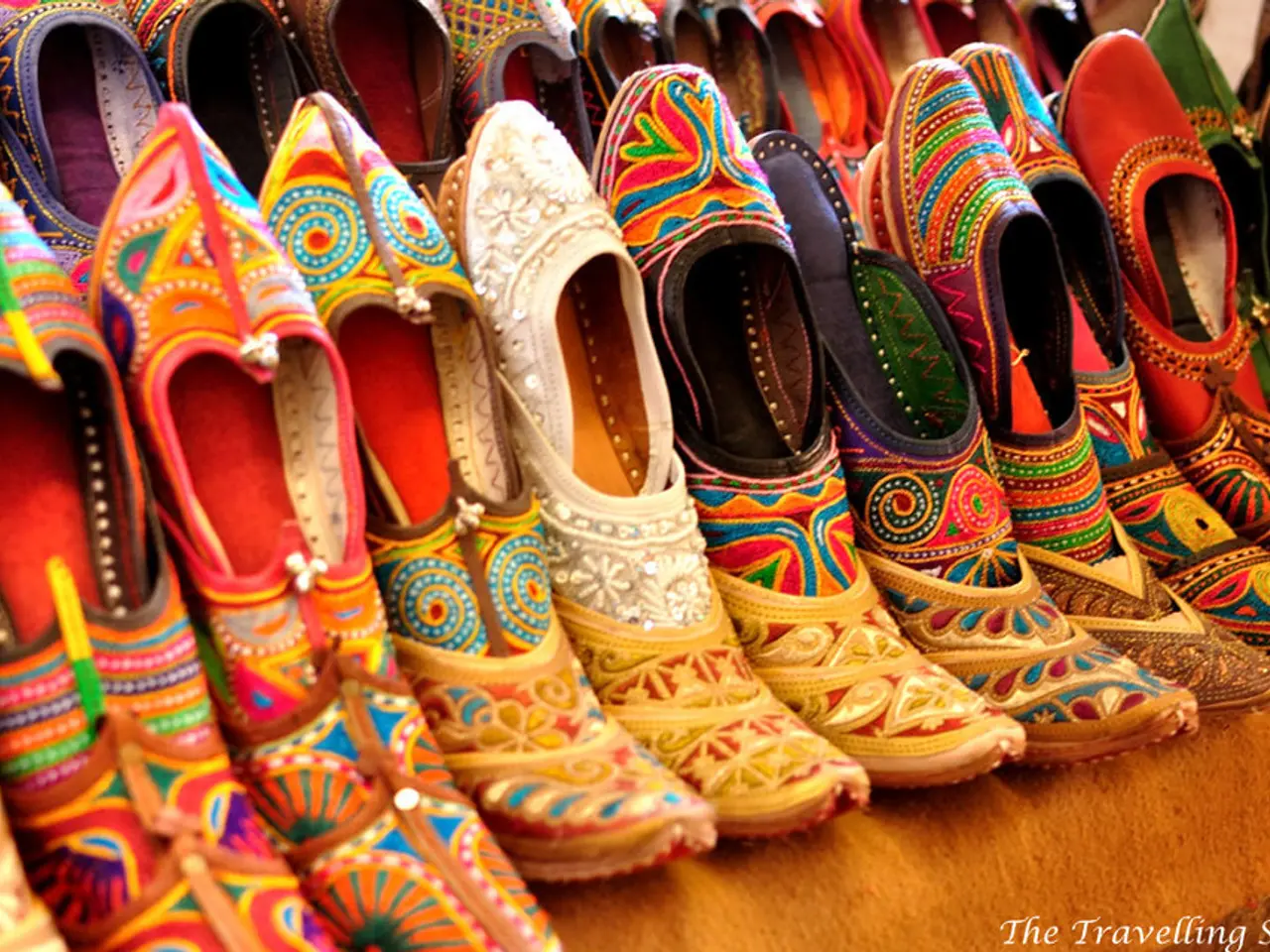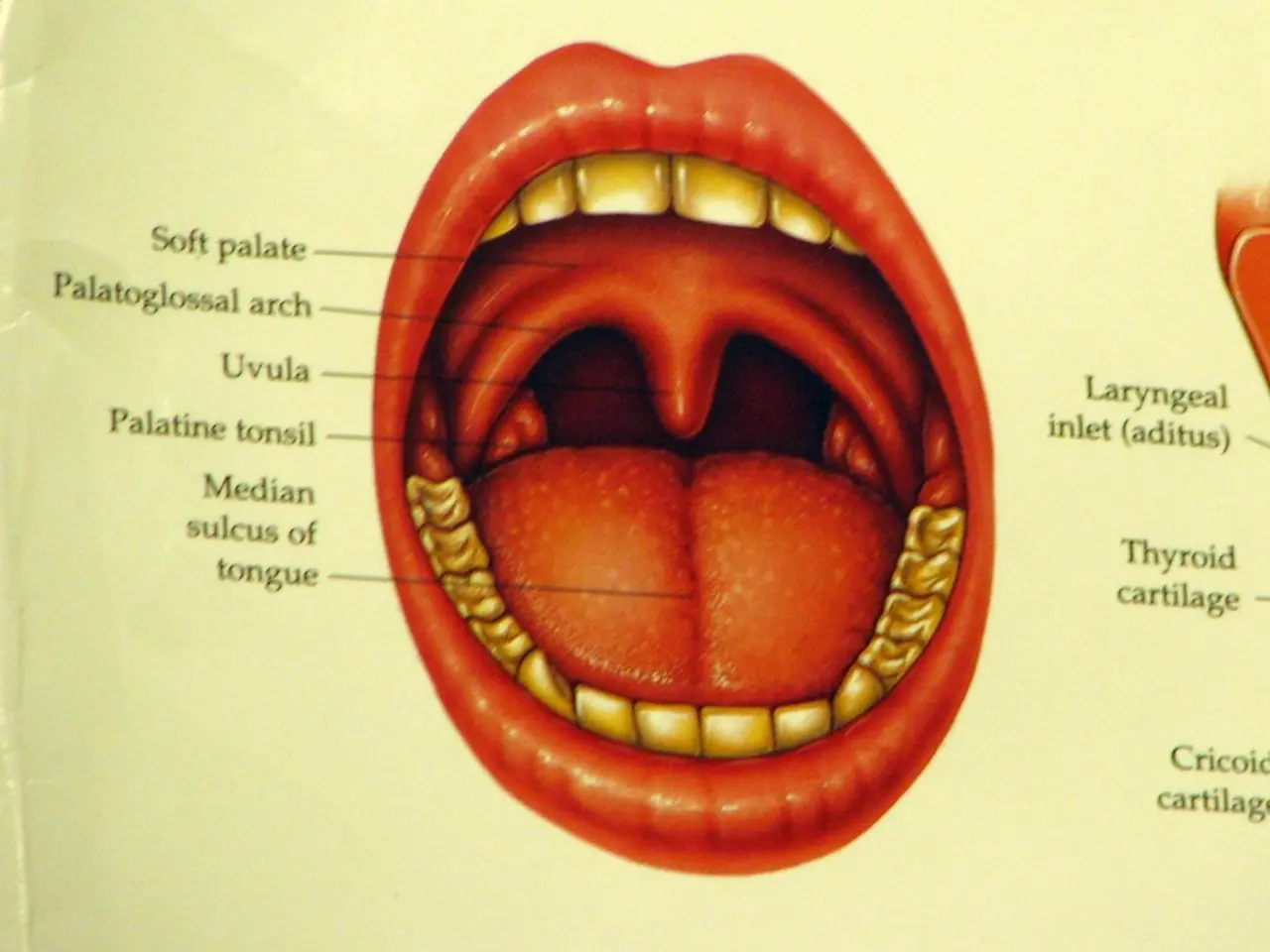Skin irritation on feet: origins, indicators, and remedies
Foot rashes can be a source of discomfort and concern for many individuals. These rashes, which can appear on various parts of the foot, are caused by a range of conditions, each with distinct symptoms and treatment options. Here's an overview of some common types of foot rashes.
## 1. Athlete's Foot (Tinea Pedis)
Caused by a fungal infection, Athlete's Foot is often found in warm, damp environments like locker rooms and swimming pools. It thrives in conditions of excessive foot sweating and tight shoes. Symptoms include itchy skin between the toes, redness, peeling, and cracking, which can also affect the soles of the feet. Treatment typically involves antifungal medications, such as creams, sprays, or powders, and preventive measures like keeping feet dry and using shower shoes in public areas.
## 2. Contact Dermatitis
Contact Dermatitis is a rash that occurs when a substance irritates the skin or produces an allergic reaction. Substances that may cause contact dermatitis include metals like nickel, makeup, latex, frequent washing, or contact with water and bleach. Symptoms include redness, itching, and rashes on the skin, with blisters forming in severe cases. Treatment involves avoiding the allergen or irritant, applying topical corticosteroids, and using oral antihistamines to reduce itching.
## 3. Poison Ivy, Poison Oak, and Sumac
These plants grow in wooded and marshy areas. Their sap contains an allergen called urushiol, which can trigger an allergic skin reaction or contact dermatitis. Symptoms include flushed, itchy skin, bumps or blisters on the skin, swollen, tender skin, and in severe cases, difficulty breathing and fever. Treatment involves topical corticosteroids and oral antihistamines, and promptly washing off the sap to prevent the rash from spreading.
## 4. Dyshidrotic Eczema
Dyshidrotic Eczema, or dyshidrosis, is a common form of eczema that causes itchy blisters on the palms of the hands and soles of the feet. Causes include stress, excessive sweating, or contact with certain metals like nickel. Symptoms include itching, redness, and blisters, especially on the feet, hands, or between toes. Treatment includes soaking in cool water, applying moisturizers, and using topical steroids or calcineurin inhibitors.
## 5. Hand, Foot, and Mouth Disease (HFMD)
HFMD is caused by viral infection, most commonly caused by coxsackievirus A or enterovirus 71. Symptoms include red spots or blisters on the hands, feet, and inside the mouth, fever, and sore throat. The disease is highly contagious and can be contracted by touching a person with the infection, objects or surfaces that carry the virus, or breathing air that contains the virus particles. Treatment involves supportive care, ensuring hydration, and pain management.
## 6. Cellulitis
Cellulitis is a bacterial infection that develops in the deep layers of the skin and on the lower legs and feet. It's often caused by Streptococcus or Staphylococcus bacteria. Symptoms include redness, swelling, warmth, and pain in the affected area, which can spread rapidly if not treated. Treatment involves antibiotics, usually oral for mild cases, and intravenous for severe infections.
## 7. Scabies
Scabies is a skin condition caused by microscopic scabies mites that burrow into the upper layer of the skin and lay eggs. Symptoms include severe itching, especially at night, and a pimple-like rash. A scabies infestation can lead to a skin rash and intense itching, with the affected area of skin developing pimple-like blisters or thick, crusty scales. Treatment involves a doctor prescribing topical medications that kill the mites and their eggs, such as permethrin and ivermectin, and disinfecting bedding, clothing, and any other fabrics that are regularly used to prevent recurring infestations.
For each condition, early diagnosis and appropriate treatment are crucial to prevent complications and reduce discomfort. If the cause of a rash is unclear, consulting a healthcare professional is advisable.
- The itchy skin between toes, redness, peeling, and cracking, commonly found in athletes, could be a sign of Athlete's Foot (Tinea Pedis), a fungal infection often spotted in warm, damp environments.
- Contact Dermatitis, a rash triggered by an irritant or allergen, might show symptoms like redness, itching, and rashes on the skin, with blisters forming in severe cases.
- The flushed, itchy skin, bumps or blisters, and swollen, tender skin might suggest exposure to Poison Ivy, Poison Oak, or Sumac, plants that grow in wooded and marshy areas.
- Dyshidrotic Eczema, a common form of eczema, can manifest as itchy blisters on the palms of the hands and soles of the feet, often caused by stress or excessive sweating.
- Hand, Foot, and Mouth Disease (HFMD) presents symptoms such as red spots or blisters on the hands, feet, and inside the mouth, as well as fever and sore throat, and is highly contagious.
- Cellulitis, a bacterial infection that typically affects the lower legs and feet, displays symptoms like redness, swelling, warmth, and pain in the affected area, which can spread rapidly if left untreated.
- Scabies, a skin condition caused by microscopic mites burrowing into the skin, often results in severe itching, especially at night, and a pimple-like rash, requiring a doctor's prescription for topical treatments to kill the mites and prevent recurring infestations.
For each medical condition, prompt diagnosis and treatment are essential to prevent complications and minimize discomfort. In case of uncertainty, consulting a healthcare professional is always advisable.




